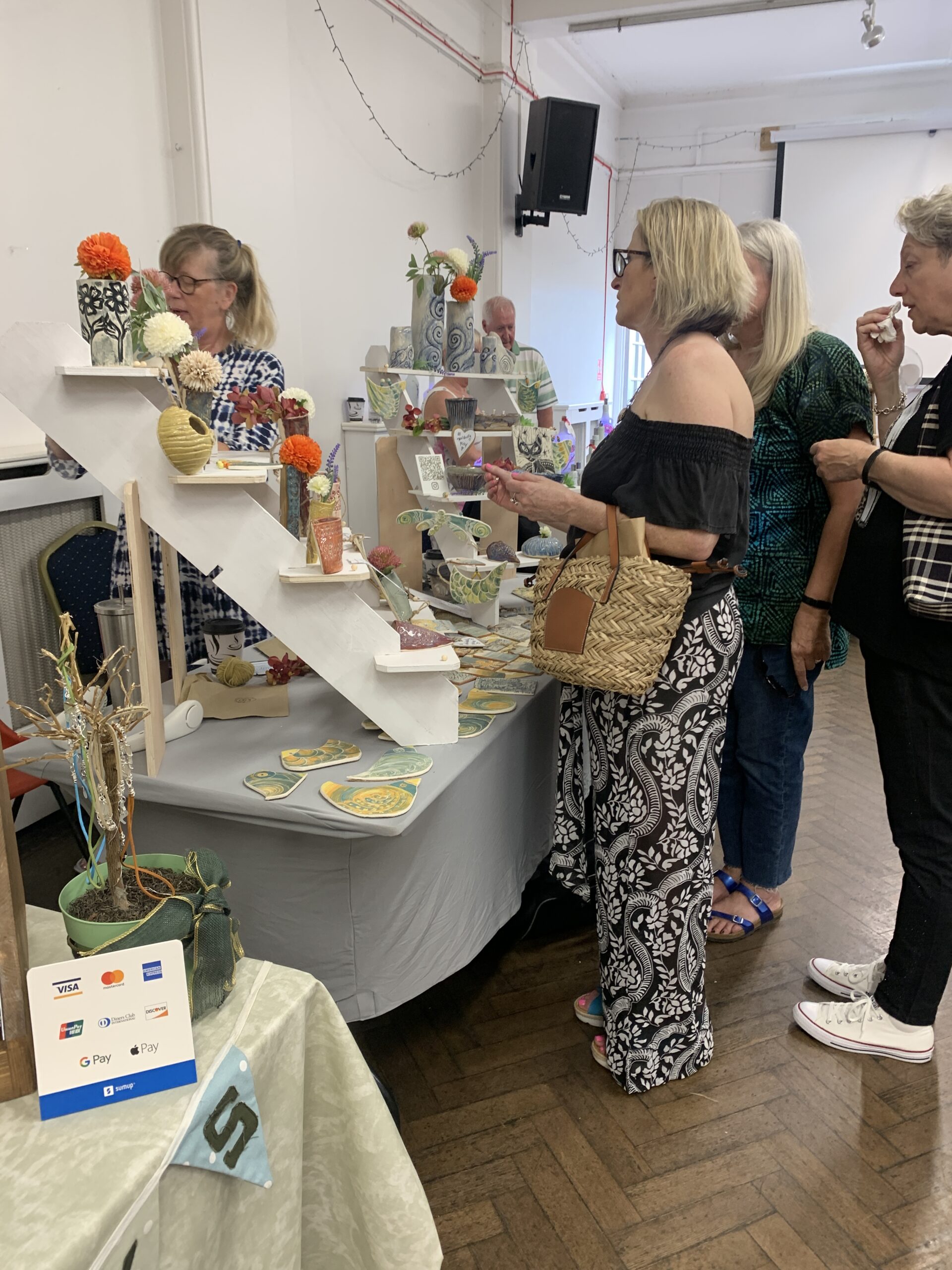Craft Fair Etiquette

Craft fairs present a wonderful opportunity for artists and makers to showcase and sell their unique creations. However, if you are new to participating in craft fairs, it’s important to be aware of the unspoken rules and etiquette that govern such events. Adhering to proper etiquette not only helps you make the most out of your craft fair booth but also ensures a positive experience for your fellow vendors and customers.
Here are ten important rules you should know
- Respect your neighbours: Craft fairs can be bustling with activity, and you may find yourself situated right next to another table. It’s crucial to be considerate of your neighbours. Avoid encroaching on their space with your display and ensure your storage boxes don’t spill into their area. Keep your volume at a reasonable level, refrain from obstructing their space or view, and inform your neighbours if you need to leave your table temporarily. Remember to assist them when requested and refrain from poaching customers from their table. Patience is key; wait until your neighbour’s interaction with a customer is complete before engaging them.
- Warmly greet visitors: A friendly greeting can significantly enhance a customer’s experience. Make an effort to smile, establish eye contact, and say hello to everyone who comes to your table. If someone shows interest in your products, be ready to answer any questions they may have. Be approachable, maintain a friendly demeanour, and be prepared to share insights about your creative process.
- Keep your space tidy: A clean and organised space is more appealing to customers. Ensure your products are neatly displayed, leaving ample space for people to move around. If you have food or drink in your space, keep it out of sight from customers. You want to avoid presenting a half-eaten ham sandwich next to your products.
- Respect your customers: Treat your customers with kindness and respect. Avoid pressuring them to make a purchase and provide them with space to browse. If someone seems hesitant, offer assistance by answering any questions they may have about your products. Occasionally, you may encounter a difficult shopper who makes mean comments or attempts to devalue your work. In such situations, respond with kindness and professionalism.
- Be prepared for sales: Ensure you have sufficient change for cash transactions, a credit card reader, and any other necessary tools to process sales. Clearly mark your prices and consider offering discounts or specials to encourage purchases. Make the payment process as seamless as possible for customers, taking into account that not everyone carries cash or has specific payment apps. Removing friction in the transaction process is essential.
- Follow the event rules: Craft fairs often have specific rules and regulations that vendors must adhere to. Familiarise yourself with these guidelines and ensure compliance. Rules may include avoiding blockage of walkways, adhering to specified pitch sizes, and refraining from using loud or offensive music or signage. If the event is juried, sell only the items you stated in your application. Many events limit the number of vendors in specific categories, so honesty is important. If the event is designated as “handmade” only, sell only items you personally crafted. Additionally, avoid leaving your car parked in the loading zone during setup or lingering in the loading zone after packing up.
- Don’t pack up early: While some events may have rules against packing up early, it’s generally considered poor practice to do so. Even if the event is slow, leaving early can confuse shoppers who are still present and inadvertently harm other vendors. Alongside this rule, honour your commitment to participate in the event by showing up on time and avoid last-minute cancellations unless there is a genuine emergency. Event organisers rely on vendors fulfilling their obligations to ensure a positive experience for shoppers. Demonstrating reliability establishes your reputation and improves your chances of future invitations from organisers who often communicate with one another.
- Express gratitude: After the event, send a note of thanks to the organisers and any customers who made purchases at your table. This gesture helps foster positive relationships and may lead to repeat business in the future.
- Network with other vendors: Take advantage of the opportunity to connect with fellow vendors at the fair. Collaborate on future events, exchange tips and resources, and explore ways to support each other’s businesses.
- Consider liability insurance: Depending on the event, craft fair organisers may require vendors to have liability insurance. This type of coverage protects you from financial losses in the event of accidents or injuries that occur during the fair. Consider the potential risks you may face, such as slip-and-fall accidents, product liability claims, or damage to another vendor’s property, and assess whether obtaining liability insurance is appropriate for you.
To conclude...
By adhering to these etiquette rules, you can create a positive experience for yourself, fellow vendors, and customers at craft fairs.
Have a lovely day!
Love, Katy x